

Fall 2025



ABOUTTRENDS

TRENDS is published twice times a year by Great Lakes Association of College and University Housing Officers (GLACUHO) for members of the association.
GLACUHO is a non-profit organization that strives to:
Better prepare housing officers to meet the diverse and changing needs of those we serve with primary concern for students.
Contribute to the improvement of dining services, residential life, residential services, and residential facilities provided by housing officers.
Sponsor activities and services which assist housing officers in the exchange and distribution of information and ideas.
Support the goals and purposes of the Association of College and University Housing Officers International (ACUHO-I)
Provide opportunities for the education and professional development of housing officers.
Advance and communicate professional knowledge and standards in the field of housing.
GLACUHOCommunications&MarketingCommittee
JaCarlaAnderson UniversityofCincinnati
ABOUTTRENDS
KelleeSteffen
GabrielleJohnson
TRENDS is published twice times a year by Great Lakes Association of College and University Housing Officers (GLACUHO) for members of the association.
IndianaUniversityBloomington
SouthernIllinoisUniversity-Carbondale


DexterEarney
GrandValleyStateUniversity
CarleyEichhorn UniversityofMichigan
KeiaraVenable-Franklin
GLACUHO is a non-profit organization that strives to:
AmarahByakweli
MiamiUniversity
IllinoisStateUniversity
BillyMorrissey
Better prepare housing officers to meet the diverse and changing needs of those we serve with primary concern for students.
MichiganStateUniversity
Sponsor activities and services which assist housing officers in the exchange and distribution of information and ideas
GLACUHOBoardofDirectors
Advance and communicate professional knowledge and standards in the field of housing
President
VickaBell-Robinson,Ph.D. IndianaUniversityBloomington
PastPresident
ChiefofStaff
SarahMeaney
MiamiUniversity
ExhibitorLiaison
Contribute to the improvement of dining services, residential life, residential services, and residential facilities provided by housing officers.
AnnabelLeonova
OaklandUniversity
TravisHill
FerrisStateUniversity
Support the goals and purposes of the Association of College and University Housing Officers International (ACUHO-I)
Provide opportunities for the education and professional development of housing officers
GLACUHOCommunications &MarketingCommittee
JeremyAlexander EasternIllinoisUniversity
AmandaMientus
MiamiUniversity
President-Elect
ElianMackey
ZacBirch,Ed.D. UniversityofIllinoisChicago
EasternIllinoisUniversity
KyraDeLoach
Secretary AmyBrown UniversityofCincinnati
SouthwesternMichiganCollege
TimMcCue
IllinoisStateUniversity
Treasurer LaurenTeso NorthernIllinoisUniversity
LaurenSewell
MichiganDelegate
AlexisGostlin FerrisStateUniversity
OhioDelegate
OctaviaHubert
KelleeSteffen IndianaUniversity
PurdueUniversityFortWayne
MiamiUniveristy
PatriciaNicandro DePaulUniversity
TechnologyCoordinator
TimNickels
ThomasMannion LoyolaUniversityofChicago
EasternMichiganUniversity
IllinoisDelegate
DaveArnold
NicoleVonDrasek DePaulUniversity
UniversityofIllinoisUrbana-Champaign
CommitteeChairDelegate
ElleMcGary WesternIllinoisUniversity
AlisonSinadinos
MegWallaker
MichiganStateUniversity
IndianaUniversityBloomington
JeffSmithJr. CentralMichiganUniversity
IndianaDelegate
AngelThornsbury
BrandonPerjak
IndianaUniversityBloomington
SouthernIllinoisUniversityEdwardsville
GLACUHOBoardofDirectors&CommitteeChairs
GLACUHOCommitteeChairs
President
SteveHerndon
HealthandWellnessChair
PastPresident
NickSchiller UniversityofIllinois-Chicago
QuianaM.Stone
GovernorsStateUniversity
TechnologyCoordinator
GretaDieter
WesternIllinoisUniversity
ProfessionalFoundationsChairs
AmyFitzjarrald
ProfessionalFoundationsChairs
UniversityofIllinoisat
CynthiaMoberly FranklinCollege
Urbana-Champaign
CommitteeChairDelegate
ZacBirch
KellyWinters
NorthernIllinoisUniversity
CampusSafety&CrisisManagementChair
KevinKrauskopf
StudentLearning
NorthernIllinoisUniversity
President-Elect
JosiePalitzsch
JeremyAlexander
CampusSafety&CrisisManagementChair
ConferenceHostChair
SouthernIllinoisUniversityEdwardsville
EasternIllinoisUniversity
CarolineMurray
DaveArnold UniversityofIllinois
ElmhurstUniversity
ConferenceHostAssistantChair
MichiganStateUniversity
LoveyMarshall
Secretary
Inclusion&EquityChair
DavidMartinez
NathanTomson
IllinoisUniversity
SaginawValleyState University
ConferenceHostChair
HealthandWellnessChair
RodWaters
TresaBarlageZianno
DePaulUniversity
MiamiUniversity
Communications&MarketingChair
Treasurer
BrandonPerjak
ShavonnNowlin
SouthernIllinoisUniversityEdwardsville
SaintXavierUniversity
ContemporaryIssuesChair
ExhibitorLiaison
JakeMcLean
EddieNguyen-Koelzer
KnoxCollege
MichiganStateUniversity
UniversityofIllinois-Chicago
Facilities&OperationsChair
JeremyMiracle
ConferenceHostAssistantChair
StudentLearning BradfordPeace
JocelynMaul
DePaulUniversity
Communications&MarketingChair
IndianaUniversityBloomington
BallStateUniversity
Inclusion&EquityChair
Facilities&OperationsChair
RobertKing OaklandUniversity
JimSteingreaber
SaraKennedy UniversityofCincinnati
ContemporaryIssuesChair
MichiganStateUniversity
AlisonSinadinos
IndianaUniversity
A LOOK INSIDE THIS ADDITION
Hayley
Gabrielle
Billey


How to Be a Social Medium: Demystifying the Fear of Social Media in Housing and Residence Life
Communications and Marketing Social Media Subcommittee: David Binkley, Amarah Byakweli, Travis Hill, Kellee Steffen
Dimitri Boveroux-Heath, Indiana University Bloomington


GLACUHO GLACUHO GLACUHOcommittees GET TO KNOW

Facilities&Operations
Reviews facility trends and sustainability options for housing operations.
ContemporaryIssues
TOPIC: Reconciling Personal Values and Institutional Priorities
This year, the committee will examine navigating personal values with institution priorities.
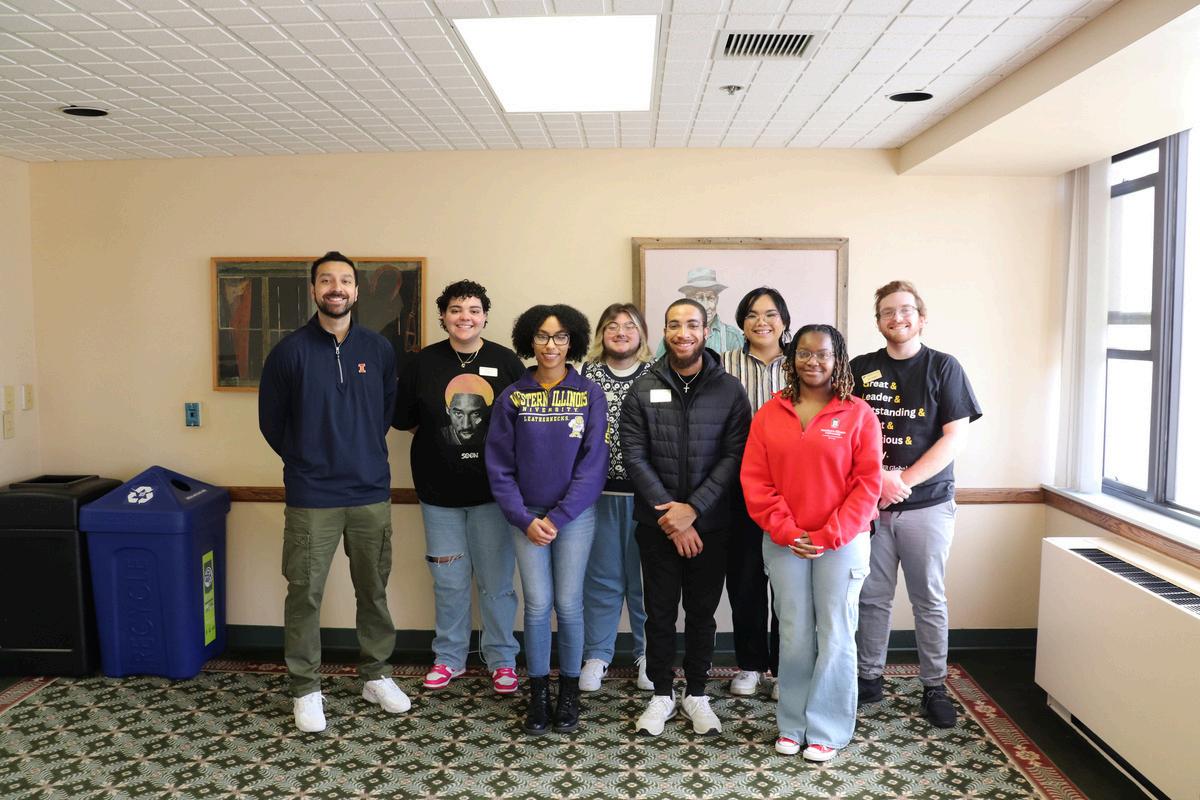
StudentLearning
Inclusion&Equity
Provides resources and opportunities on various multicultural and diversity-related topics.
Researches trends and provides resources and best practices in the area of student learning.

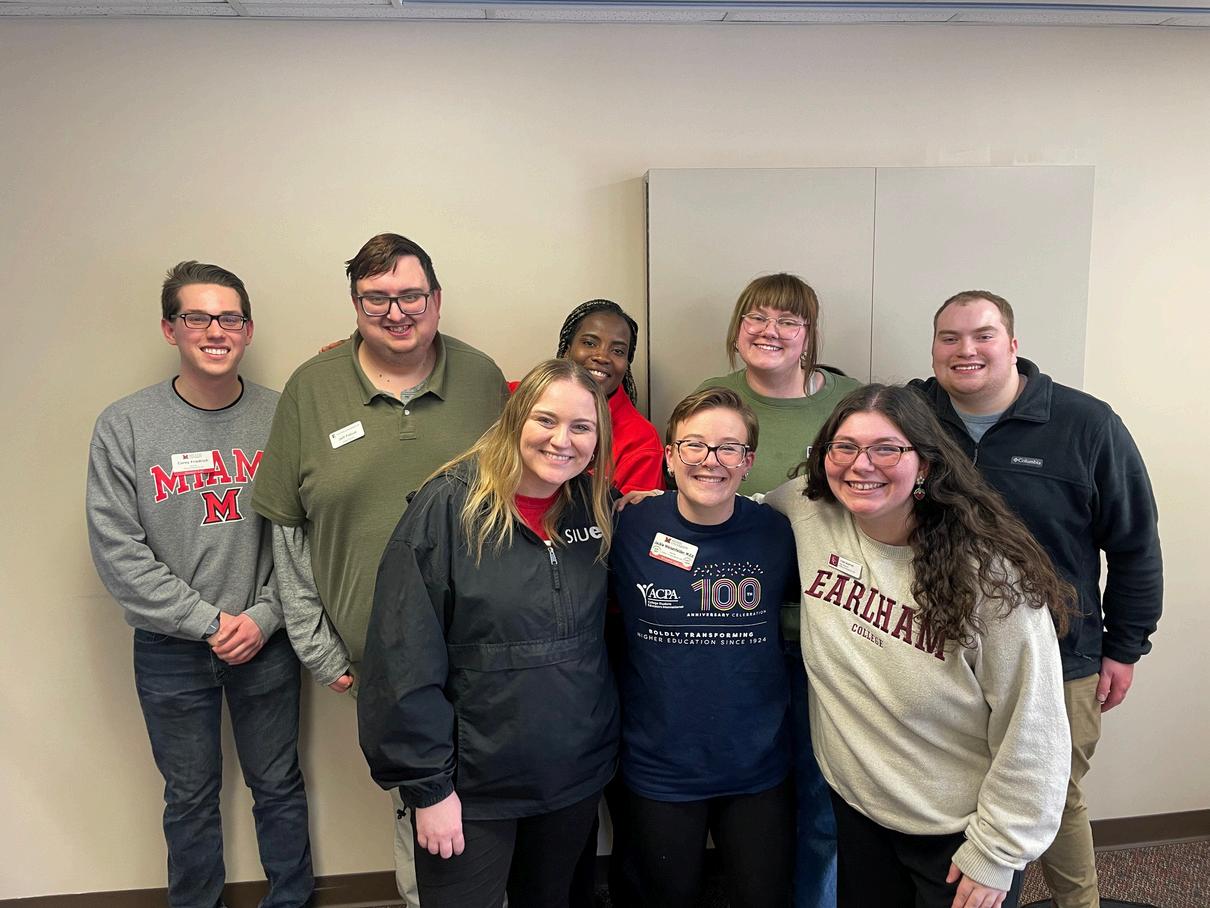


Health&Wellness
Creates resources for students and staff members in the area of Health and Wellness.
Communcations&Marketing
Creates our GLACUHO publications and is responsible for the marketing and social media of the association.


ProfessionalsFoundations
To provide resources and opportunities for the education and professional development of Residence Life professionals in the foundational skills of the housing profession
CampusSafety&CrisisMgmt.
Researches trends and provides resources and best practices in the area of campus safety and
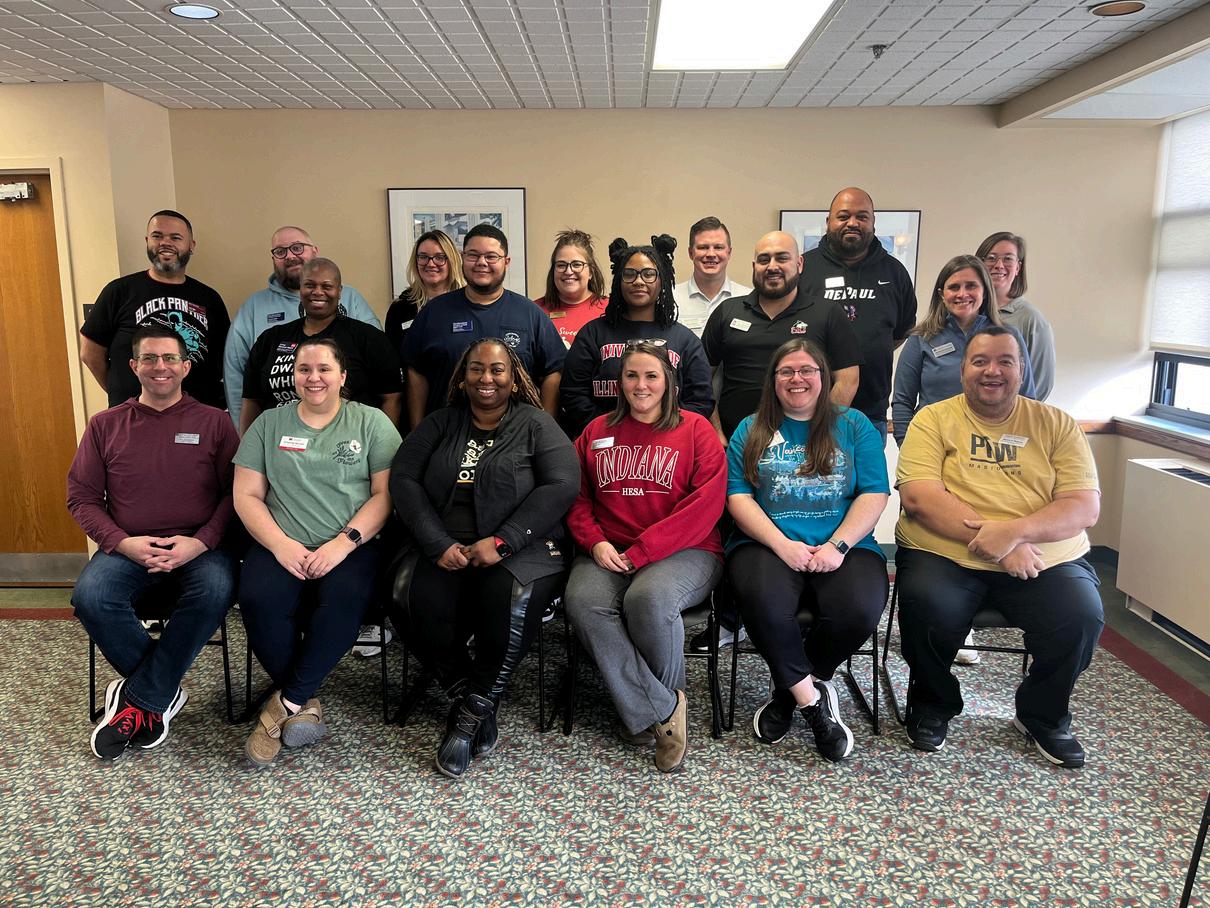

onferenceHost
e annual conference planning and ordination will be performed by this mmittee, taking the place of host institutions der our old structure.

What Can I Do During the Renovation?
Written By: Billy Morrissey, Allysa Johnson, Miles Evenson,
and Heather Whitman from Michigan State

CampbellHallThenandNow
NamedafterLouiseCampbell,aninfluentialleader for Michigan State University (MSU) who led the MSU Home Economic Outreach in the 1920s and beganthepracticeofteachingandtrainingforrural women, Campbell Hall was built in 1939 The collegiate gothic style architecture is a reminder of what college housing first looked like and the values of community and academic success Campbell Hall is one of six buildings part of the West Circle Community at MSU, and is the third building to be renovated in the community. The renovation discussions started well before 2024, but the construction started in May 2024 and continued until September of 2025. With this renovation the building was becoming the home to theHonorslivinglearningcommunity,whichmeant we would work with new stakeholders in a completely different way than before the renovation. In this article, several community and department leaders will share their advice and guidance on how to support a project while construction is happening, even when you are not the one swingingthehammer.

University
Assistant Director- Allysa Johnson Allysa Johnson is the Assistant Director for the West Circle community and supports the full-time, graduate student, and undergraduate student staff. She is the bridge between upper administrative leadership and the in-hall staff. The answers below share her insight on communication and resources that supported both upper leadership and the inhall team.

When asked: “What are some things you found helpful to do during your time assisting with the renovation timeline?”, she recommended consistent communication with facilities partners, who seem to be a bit more involved as stakeholders of this renovation. This helped ensure there was updated timelines on return to the building, special projects, anticipated noise, and other community disturbances. It also helped solidify opportunities to tour the building mid-renovations which helped with community visioning and legacy leaving for staff members who may have been or will be part of this building’s story before, during, or after the renovation. She also recommended regular unit-based check-ins and proactive communication about space use, partnerships, and building nuances so that some groundwork would be laid when keys were returned.
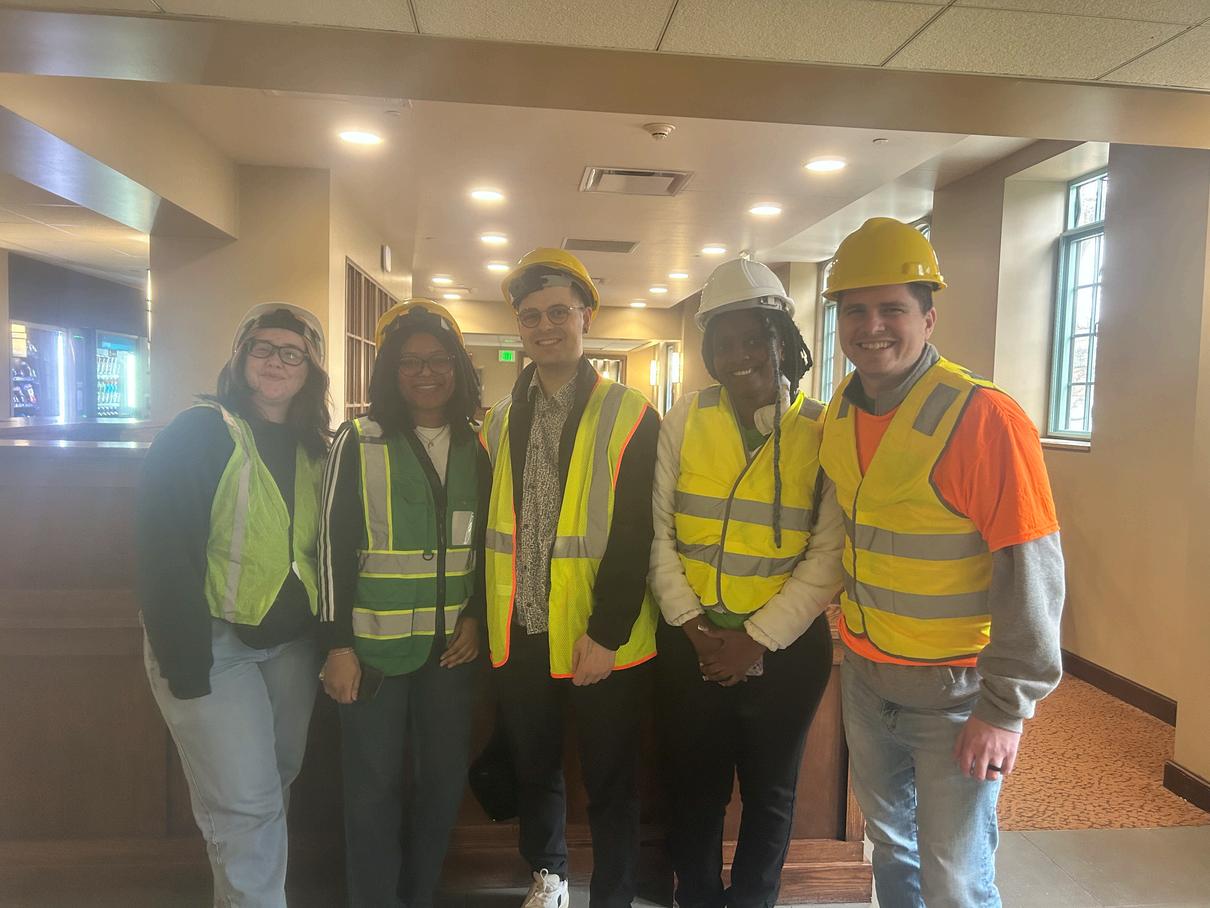
Another recommendation was to maintain systems and processes that are applicable during the closure and the reopening. Some examples included duty procedures and zones, community staffing, move-in logistics, etc. The major theme behind this advice was not to stray so far from the norms when designing operations for the temporary closure, this makes it so that you don’t have to completely readapt the processes back when the building reopens.
When asked: “What are things you wish you had known about or done during the timeline of the renovation to help progress?”, she said that she wishes she had found ways to get more involved in the building design and conversations with contractors. She felt this way because facilities were the primary stakeholder in the design and bidding process, and the team was a bit more fixed in the resident experience and learning lane. An example of this was that the floor plans, room numbers, and room occupancy were discussed with stakeholders but not with the live-in staff.
When asked: “What resources did your institution have to support your efforts during the timelines of the renovation?”, she stated most of the resources she noted were personnel-based, meaning people who reached out to offer guidance, open planning, and ideating dialogues about how people show up in the community once the building reopens. She didn’t believe that physical resources were needed from the institution beyond maybe some more structured walkthrough and connection opportunities with the contractors themselves, which was lacking from the perspective of the residential staff.


When asked: “Do you have any advice on staying aware of the progress and reporting out that information to key stakeholders?”, she recommends as many people as possible are aware of timeline updates because anticipated timelines can always get moved back. Informed team members can support the development of backup plans and problem solving. You may not use them, but you’ll be glad you have them if you do.

The final pieces of advice that she had were to ask questions and be the best partner you can be. If somebody explains a blueprint to you and it does not make sense, that is completely normal. Don’t let it stop you from asking for explicit description, mockups, etc. This community will be your responsibility soon and you should be confident in your understanding of it.
Community Director-Billy Morrissey
Billy Morrissey is the Community Director for West Circle and in his role, he supports community development and the student experience, supervises the graduate and undergraduate student staff, and bridges the partners in the community together with the students. Billy started at MSU in October of 2023 and came into the project during the finalization of the renovation preplanning phase.
When asked:

“What are some things you found helpful to do during your time assisting with the renovation timeline?”, he shared that providing lists of empty rooms to facilities allowed them to get a head start on clearing the building. When the renovation happens, they will most likely need to remove all the furniture to start the project, and this can be a lengthy process. Giving the team as much of a head start as possible greatly impacts their ability to start the project. He also shared that building a relationship with the Honors College helped coordinate opening plans easily This allowed for a shared event calendar to be made and hiring qualified Honors student staff members for the floors to develop community. The event calendar has helped with promoting each other's events and not scheduling over each other. Having the Honors College input on the selection process of student staff helped build trust and find great student staff for the year. Another helpful decision was to receive weekly updates from the facilities team on the status of the project. These updates allowed for making contingency plans and supporting the community in the interim while the building finished renovation past the anticipated end date.
When asked: “What are things you wish you had known about or done during the timeline of the renovation to help progress?”,
he shared that the opening of the project fell during the start of RA training and did not take the opportunities to walk the building much towards the end of the project. This was a missed opportunity to help catch last-minute questions and to understand what kind of environment the students and staff were moving into. He also shared that it is important to know what you can and cannot control. If the project is not done on time, that is most likely not due to your actions. However, you can provide spaces to hear concerns and share them with the stakeholders who do have a sense of responsibility for those factors.
When asked: “What resources did your institution have to support your efforts during the timelines of the renovation?”, he shared that his leadership team (himself and his graduate staff) had a chance to tour the community halfway through the project. This allowed them to see progress and ask questions about the community. This tour proved to be very helpful and allowed the team to have some questions answered. The institution also put team members in the community on a few task forces to help with ordering furniture, showcasing furniture options to students, and allowing for student input.
When asked: “Do you have any advice on staying aware of the progress and reporting out that information to key stakeholders?”, he shared again the importance of building relationships with stakeholders and getting information where you can, when you can. This was made easier by also building up those relationships before the project began. The updates from the facilities team also gave him the ability to share communication with students and student staff to know what to expect when they arrive at their new building. New can sometimes just mean new problems and the construction team may be finishing up some parts of the community Knowing this beforehand allows the student to have realistic expectations for the community


Facilities Managers-Miles Evenson and Heather Whitman
Miles Evenson was our Manager of Facilities for the West Circle Community from the start of the project until about April 2025 . Then, Heather Whitman joined the team as the Manager of Facilities for West Circle, and she saw the remainder of the renovations project. These answers blend their perspectives and highlight important things discovered at both the start and end of the renovation process.
When asked: “What are some things you found helpful to do during your time assisting with the renovation timeline?”, Miles shared that he attended the weekly progress meetings to make sure he was as up to date on how the project was progressing. He would also stop at the construction office on occasion to see if they needed anything and take tours through the building to see how things were progressing. Heather picked up these trends and carried them throughout the remainder of the project. As the project wrapped up the building walks and updates became more frequent and involved upper-level administration.
When asked: “What are things you wish you had known about or done during the timeline of the renovation to help progress?”, Heather said that she wished that their team had earlier access to project documentation, clearer understanding of decision-making channels, and more structured onboarding to the project. Miles shared that whenever the construction team needed to get into a space to see how a renovation was done before, or what currently the standard, he or another member of the team was available to let them see what they needed to see so that they could continue progressing on their end. It sounds like the transition in this project was challenging and could have benefited from better communication of the transition.

When asked: “What resources did your institution have to support your efforts during the timelines of the renovation?”, Miles stated that he had weekly progress meetings, where he could understand the progress of the project, give any thoughts that his team had, or voice concerns that his team may have. Heather was given a lot of these similar resources and elaborated on the culture of collaboration and communication tools with upper administration in facilities. She felt connected to the leaders in the department and knew what their goals and objectives were.

When asked: “Do you have any advice on staying aware of the progress and reporting out that information to key stakeholders?”, Miles shared the importance of checking in with the main point of contact on the construction side occasionally outside of progress meetings to ensure that deadlines were being met. Heather shared a lot of similar advice but also offered the importance of visual progress tracking and accountability conversations with the construction team to ensure that their team stays on time.
Miles’ and Heather’s final pieces of advice was to stay engaged in meetings and ask thorough questions. They also encouraged using a consistent form of progress tracking and communication. Heather added the importance of relationship building and being flexible with the challenges that opening a new building brings.
Conclusion
Expanding or renovating your community is a great opportunity, full of challenges and rewards. From delayed finishes to inclusive amenities, our team has worked together to support the main stakeholders: the students. At the end of the project, we had an amazing community that was ready for the Honors College to join and support. All of this was done, not by picking up hammers, but by supporting each other along the way




Beyond the Billboard: The Art of a Personal Invitation
Written by: Anica Chesnut


I was sitting in a meeting at 2:00 PM on a Friday, discussing with students how to get other students interested in attending a four-part leadership conference. I am a coadvisor of a student development committee, which is responsible for hosting the leadership conference throughout the year for any on-campus student to further enhance their leadership skills. Our committee consists of students who have already attended the leadership conference and would like to assist in the planning process. We have Resident Advisors (RA), Community Advisors (CA), Community Mentors (CM), and other students who just want to help.
We were discussing the marketing materials that we needed to prepare, to reach as many students as possible. I was asking for feedback about our posters, and I noticed that the students were not saying anything or if they did it was a one-word response. I decided to shift gears. I looked at the students in front of me and decided to ask them a simple, heartfelt question. "How did you get involved in the leadership conference?" One student talked about how

their RA wrote a personal note on a shoulder tap card, encouraging them to attend the leadership conference and slide it under their door. Another shared how I had simply stopped them in the hallway, saw them as an individual, and encouraged them to join. One by one, they told their stories, each one different yet all with a common thread: it wasn't a flyer or a poster that had convinced them to join, it was a person. It was a single, personal connection that had made all the difference. After everyone spoke, I asked if anyone joined after seeing one of our posters? The room was quiet. The silence was not a disappointment; it was a revelation It was a reminder that in a world of endless noise, what truly matters is a single, personal invitation.
When a program feedback form was distributed to students at a mid-level university this last semester inquiring as to why they attended events within the residence halls, 45% of the people responded that their reason to attend an event was related to a personal connection. The most popular response
was wanting to meet new people. The second most popular response was due to them already knowing someone who was attending the event and was invited as well.
Colleges and universities are already implementing Nancy Schlossberg’s theory of Marginality and Mattering. The Marginality and Mattering theory discusses the importance of shifting the focus of administrators to making students feel important and that they matter to the institution in order to eliminate feelings of marginality. When we combine Schlossberg’s theory with the understanding of individuals having a decrease in social-emotional skills in college students post-Covid 19 Pandemic (Cerutti et al.), we understand that students may need a more personal connection to attend events.
We also are aware of word of mouth being one of the most effective ways to market products (Berger). One of the reasons for word of mouth being very effective is because it helps consumers of information learn how to regulate their emotions by practicing reacting to unexpected information. When our paraprofessionals stop a student in the hallway, have a conversation with them and invite them to an upcoming event, it engages their socialemotional response when responding to the invite. The student is then able to reflect on the invitation and decide if that is something they would want to attend.
If paraprofessionals continue to strive to personally invite students to events, the student will be more motivated to attend and meet new people. When a program feedback form was distributed to students at a mid-level university this last semester inquiring as to why they attended events within the residence halls, 45% of the people responded that their reason to attend an event was related to a personal connection. The most popular response
Now we must reflect on if we could capture the same excitement for an event with a poster I personally do not think so On campus, we are seeing students strive for personal connections, especially during a pivotal moment of their lives such as pursuing a higher education degree. Posters are helpful, but they cannot be the end all be all for marketing events. We cannot solely rely on students seeking out opportunities to get involved
Instead, we should meet them where they are at, and have ourselves and staff members form connections with students and personally invite students to events. Going door to door and personally inviting students to events is an experience and marketing tool that cannot be recreated. The experience of having someone invite you to an event and mentioning that they would love to see you there is irreplaceable.
As organizations who are teaching individuals social emotional skills, we should continue to enforce these expectations and be the example as well. I challenge us all to continue to pause when we see a student and invite them to lunch, a coffee, an upcoming event, etc. As professional staff members, we can get caught up in administrative tasks and can lose sight of why we are all working in this field. Take a moment and stop a student in the hallway and ask them how their day is going. Invite them to an upcoming event in your community or on campus. Remember them. We are here for the students, and it is important that we remind them that they matter, because they do. We wouldn’t be here without them.

Examples

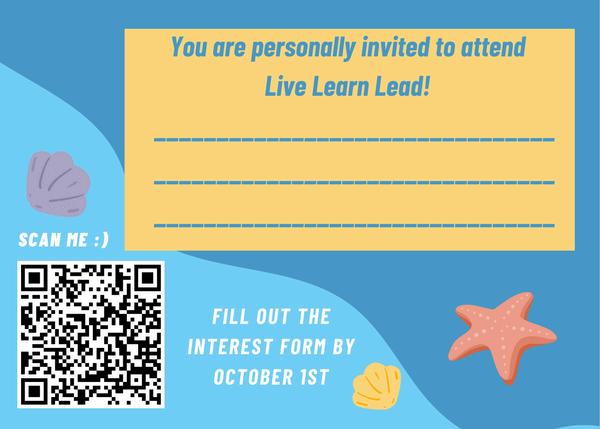
Senior Housing Officers Mentor & Mentee Experience
By Octavia Hubert
The GLACUHO Director/SHO Mentor & Mentee Experience is an exciting opportunity to engage seasoned directors/ senior housing officers across the region through a mentorship program with new directors.
Participants engage in a 12-month experience, which include coaching calls, monthly meetings, mentorship experiences, and other intentional professional development opportunities designed to foster professional growth and a greater sense of belonging within the field and association.
Program guideline & expectations
Program Length -February 2025 - December 2025
Mentoring Directors - At least four years in the director/SHO level or above
Mentee Directors - Less that four years
Pairs expected to meet/chat 45 minutes-1 hour at least once a month
Mentee Directors attend a monthly roundtable/professional development session
Mentor Directors invited to attend the roundtable and/or professional development session with their mentee
In total, we have 36 participants and a robust roster of roundtable topics that are led by the program mentors. The discussion themes are as follows:
Supervision
Campus management
Communication & Telling Your Story
Campus partnership
Navigating choices & policy decisions
Accommodations & ESAs
Opening & advocating for the department
Negotiating campus politics
Professional development opportunities
Student leader development through hall
governance
Technology & software to streamline processes
Managing change
Learning Outcomes
Fostering a Supportive Network: The program will cultivate a sense of community, helping mentors and mentees build professional networks that extend beyond the formal mentoring relationship.
Knowledge Transfer: The program will facilitate the transfer of knowledge and expertise between experienced professionals and those newer to the field.
Increased Organizational Engagement: Participants will feel more connected to the GLACUHO, leading to increased retention and engagement, particularly for mentees.
Improved Organizational Culture: The program will contribute to building a culture of collaboration, learning, and mutual support within the organization.
Continuous Improvement: Feedback from mentors and mentees will lead to the continuous evolution of the program, ensuring it remains relevant and effective for future participants.
After each roundtable, participants are invited to submit key takeaways and notable quotes. Those responses include:
“Good discussion on how to use data and stories to help others understand your impact on student success.”
“Mallory did an excellent job of facilitating the discussion. Just the right balance of prompts and then good multi view sharing.”
“It was helpful to connect with a mentor, hear about their experience of what's working and what's not. I found it freeing to talk to someone outside my institution to understand my perspective and experiences and the departmental issues I face.”
“Key take-a-way: need to be an excellent campus partner to effectively do your job as a SHO. You are looked to for occupancy projections and $$$. Need to connect and build relationships with finance team, facilities, enrollment management, etc ”
“I have really enjoyed the check-ins with my mentee. It has been more rewarding for me than I anticipated and it truly reminds me of why I continue to do this work.”
“I really appreciate this program so much already. It is immensely helpful to simply hear from others in a similar role experiencing similar things.”
“Thank you!!! To all who help organize this program, and especially Octavia! An additional shoutout to Stacey Mwilambwe who jumped right in to become the host of today's session asking questions, inviting others to share thoughts, etc.”
“My mentor has been great and has become a trusted colleague!”
The program will conclude in December yet we hope the connections continue to grow. Registered participants are invited to attend the Director/SHO Mentor & Mentee Program meet up at the 2025 GLACUHO Annual Conference in Dayton, Ohio. Thank you to all participants!

NOCRISISEXPERIENCE?NOPROBLEM! TRAINING PROFESSIONAL STAFF WITH NO CRISIS MANAGEMENT
EXPERIENCE
Written By: Sher-Ron Laud, Columbus College of Art & Design Hayley Smalec, Western Michigan University
Students in crisis are more commonplace now than ever before. Housing and residence life professionals are involved in the majority of these situations, but how do we ensure our teams are ready? This article shares the perspectives of two residence life professionals - one a senior housing officer and the other, an entrylevel hall director. They reflect on personal experiences and learned lessons around managing and responding to student crisis situations; particularly, ways to prepare entry-level staff who may not have prior crisis management experience.
SHER-RONLAUD,ASST.DEANOFRESIDENCELIFE&STUDENTENGAGEMENTAT
COLUMBUSCOLLEGEOFART&DESIGN:
My career in residence life began as an undergraduate, working as a guest housing manager. After several positions at a variety of institutions, I’m now working as a senior housing officer, mentoring entry-level staff on the facets of student residential work, including crisis response. In doing so, it helps to reflect on my own experience as a new professional. The first student crisis situation to which I responded involved an unresponsive student. It was an alarming situation requiring the rapid gathering of known information and the triaging of the student, all while waiting for medical responders. This was followed by thoroughly documenting the incident for sharing up to senior leaders. After that incident, I realized there wasn’t a single on-call manual that could have adequately prepared me for that situation and only after extensive experience and the guidance from other professionals did I begin to understand how to appropriately respond to a variety of crisis situations. In addition, it became clear that entry-level staff need more intentional support in this area.


Throughout my career, I have supervised RA’s, graduate Hall Directors, Coordinators, and mid-level professionals. They come to our institutions from a variety of backgrounds and experiences and are motivated to make a difference in college student lives and not long after beginning their first role, they encounter a large volume of crisis, including critical incidents, emergencies, inclement weather, and mental health crisis, but with minimal to no training, significant risk is exposed. In addition, the lack of training combined with the volume of incidents has resulted in a marked increase of entry-level professionals becoming overwhelmed and overburdened with their workload -a trend the field needs to monitor and address appropriately.

Over time, this trend has greatly impacted the field so when I became a supervisor, I began dedicating time to providing new entry-level hires with thorough training and robust tools to develop their competency and confidence in responding to crises and I highlighted the importance of following established protocols. My approach to training entry-level staff is executed in three phases -education, application, and self-care. First, staff are introduced to common trends both in higher education broadly and in the specific field of residence life. Next, I provide a comprehensive overview of student development theory, which is adjusted based on the staff member’s prior education. The review of theory includes the following concepts:

Sanford (1967) defined development as “the organization of increasing complexity” (p. 47) Miller and Prince (1976) defined student development as “the application of human development concepts in postsecondary settings so that everyone involved can master increasingly complex developmental tasks, achieve self-direction, and become interdependent”(p.3).
Rogers (1990) defined student development as “the ways that a student grows, progresses, or increaseshisorherdevelopmentalcapabilitiesasaresultofenrollmentinaninstitutionofhigher education”(p.27).
Student Development is a philosophy that guides student affairs practice as “a concern for the development of the whole person” (Rogers, 1990, p. 2)
To conclude the educational phase, I share in depth strategies and expectations for responding to the multitude of crisis scenarios one may encounter, including instruction on established protocols.
The next phase turns training into practice where I facilitate tabletop exercises and behind closed door scenarios; after which, we review the institution’s crisis response procedures and compare them to our exercise for application. Th exercises typically cover a broad range of scenarios including incidents of suicide ideation and self-harm, which are drawn from real scenarios I have encountered in my career. We then debrief on the exercise and focus on what went well and which areas need improvement. The result -a more confident staff and a more consistent response to future crises.



The final phase focuses on self-care. I encourage my teams to establish healthy boundaries and explore various strategies that support a sustainable work-life balance. Following any incident, I consistently check in with team members -not only to review what occurred, but also to discuss its emotional impact and identify any support they may need from me. I've seen meaningful results when team members lean on each other, consult with leadership, and take time to process challenging situations, practices that are essential to their wellbeing and help mitigate burnout. Integrating this into our daily routines reflects a culture of genuine care and creates space for reflection. To further support this, I schedule recurring Monday meetings during which my team debriefs on events from the prior week. These sessions allow us to evaluate what went well, pinpoint areas for growth, share successful approaches, and offer mutual support in a spirit of solidarity.
Ultimately, these practices have effectively addressed the growing trend of crisis burnout in residence life professionals and have enhanced the student experience, improved outcomes during crises, and boosted team morale -all key priorities in our field.

HAYLEYSMALEC,HALLDIRECTORATWESTERNMICHIGANUNIVERSITY:
When I started graduate school, people asked me what I wanted to do after I graduated. I wasn’t quite sure, but I always said, “anything but housing”. Four years later, I am entering my third year as a Hall Director. I changed my mind after a summer internship with Residence Education at Michigan Tech University between my first and second year of graduate school. While I did not serve on an emergency response team, I did get to help create student staff training and learning model curriculum for students. I fell in love with the idea of being able to support students from a holistic lens in the place that they call home. And the free housing isn’t a bad perk either.

During my internship, I got a peek into what crisis management looked like by participating in some of the training they did with their professional staff. When I started my current position, we went through our institution’s response policies and then practiced some behind closed doors scenarios as a large group. In starting to work in residence life, I actually realized that I had dealt with many similar situations in the past. As a graduate assistant, I was a student success coach and had conversations where students shared about their mental health and Title IX situations. I was actually excited to have formal training and policies around how to handle and report these situations for the first time in my career. As a result of this, I believe that we should expand crisis response training to student affairs professionals beyond Housing and Residence Life, as they can also experience students in crisis.



I was very nervous about serving on duty for the first time, however that ended up being one of the easier parts of the job. In extreme circumstances, we are often not in charge of the scene, often letting police or other emergency personnel take charge. At my institution, we have some aging buildings, and so maintenance and facilities tend to be our bigger concerns rather than issues involving students, which was not something I expected when I first began the position.
I actually believe that having a non-housing background helped me to manage boundaries in a live-on role. Before I started working in housing, I lived on my own in an off campus apartment complex. I knew what it was like to go home and not be surrounded by students. So when I started my live-on role, I knew that having my own personal space would be very important to me. I have made my apartment a safe haven for myself. Decorating with things I like, sleeping with a noise machine, and also, of course, having my sweet cat with me.
For those that are starting entry level roles in housing without any prior experience, learn to trust your instincts! You have gone through training (and in some cases a masters degree!) to help learn the policies and procedures. Take a deep breath, listen to what the situation is, and you’ll think of what to do! If not, always know that you can call your peers or supervisors for advice on what to do.
The Power of Design
Introduction
It is important to consider everyone when you are creating media for residents, staff, guardians, and other stakeholders A part of this consideration should include limiting any barriers in the design that may impact the ability to receive the content.
Fonts
Fonts can be a great way to enhance the design and feeling of your message, but it is important to not sacrifice the engagement for expression When considering a font, a great rule to consider is “the less is more” theory. Having more than one or two fonts can distract or muddy up the design. Your message should be cohesive throughout the document, and so should the fonts chosen.
Some notable barriers can be the fonts, colors, and organization of the media that may draw people in but be inaccessible for specific audiences
The size of the font is also a large factor. You may want to consider using larger fonts to allow a wider audience to be able to read the message However, it is important to use a relative font size to the space in the document and the importance of that specific information. This last note expands beyond fonts, but can be a difficult barrier for accessibility, and that is color. The color of the font needs to contrast the background. A great example of contrast is a dark font on a light background, or reverse.
Screen Readers
A great tool to consider when creating designs is a screen reader. A screen reader helps a person with a visual impairment read digital media by using alternative texts to help read the overall message and supports describing pictures or videos. To help describe the pictures and video, a designer can add text with a visual description. Make sure to change the font to match the background so it cannot be seen. An example description for the picture below could look like: “Michigan State Football Game at Spartan Stadium.
Do not duplicate picture captions as this will be redundant for screen reader users. Also consider using important highlights versus long detailed explanations for alternative texts. A bad example would be for the same picture: “A picture of Spartan Stadium at sunset with a large crowd cheering located on Michigan State University’s campus during the fall of 2024.” Utilizing a screen reader or other accessibility tools to ensure that everyone is able to engage with your message
Organization to Support Neurodiversity
Georgia Broome describes neurodiversity as the natural diversity of human minds. She elaborates further, "it is a biological fact that we are diverse in our minds, just like we are diverse in our ethnicity, gender, sexuality, etc.” There are four simple steps to help support your message: prioritize clarity, consider the pace of information, utilize structured formats that break up the text, and provide multiple ways to engage with the messaging. Messages should be clear, concise, and consistent. Georgia highlights these concepts well in her article about the subject and showcases great examples of each step

How We React to Color, Logos,
and
Space
Design is more than aesthetics, it’s a language that speaks directly to our emotions, behaviors, and sense of belonging. In the context of university life, especially within residence life and student engagement, design plays a subtle yet powerful role in shaping how students feel, think, and connect From the colors that surround us to the logos we associate with our institutions, every design choice carries psychological weight.
Color: The silent Influencer of mood and memory
Color is one of the most immediate and impactful elements of design. Elliot and Maier show in their 2014 study Color Psychology, that colors can influence mood, memory, and even physiological responses Warm colors like red and yellow tend to increase excitement and energy, while cool tones like blue and green promote calmness and focus In residence halls and student centers, these choices can make the difference between a space that feels welcoming versus one that feels sterile or overwhelming.










For example, a student lounge painted in soft blues and greens may encourage relaxation and social interaction, while a study room with brighter yellows might stimulate alertness and creativity. The strategic use of color in university spaces can enhance wayfinding, improve shortterm memory, and even support emotional regulation, as shown in the Elliot and Maier study.
Moreover, cultural context matters. As shown in the IOSR Journals 2023 study The cultural significance of color, in some cultures, white symbolizes purity; in others, it may represent mourning Designers in higher education must be mindful of these nuances, especially in multicultural institutions where inclusivity is key.

Logos: Identity, Emotion and Belonging
Logos are more than symbols; they are emotional anchors A well-designed university logo can evoke pride, trust, and a sense of belonging. According to Inkbot Design’s Logo design psychology, elements like color, shape, and typography in logos influence how people perceive an institution. For instance, blue in a logo often conveys reliability and professionalism, while red can suggest passion and energy.
Think of the iconic logos of major universities: they often incorporate traditional fonts and heraldic symbols to communicate legacy and prestige. But modern institutions may opt for minimalist designs to reflect innovation and accessibility. These choices are not arbitrary, they are strategic efforts to shape how students, staff, and the public emotionally connect with the brand
In residence life, logos used in programming materials, hall branding, and staff apparel can foster identity and unity. When students see consistent, thoughtful design across their living spaces, it reinforces their connection to the community and the institution.
Designing for belonging in a Residence Hall
Residence life is a microcosm of the university experience, and design within these spaces directly affects student engagement and well-being. Inclusive residential programming, supported by intentional design, has been shown to enhance students’ sense of belonging, academic success, and retention as discussed in IJARPR’s 2023 study.
Design elements such as culturally responsive decor, identity-affirming signage, and flexible communal spaces can validate diverse student experiences. When students feel seen and supported in their living environments, they are more likely to engage socially and academically.
Furthermore, residence halls designed with color psychology in mind can promote emotional stability and cognitive growth. For example, using calming colors in sleep areas and energizing tones in communal kitchens or lounges can subtly guide behavior and mood.
Design as a Tool for Connection
In higher education, design is not just about making things look good, it’s about making people feel good, feel seen, and feel connected. Whether through the colors of a student union, the logo on a residence life t-shirt, or the layout of a residence hall lounge, design choices shape the emotional landscape of campus life.
As student affairs professionals, we have the opportunity to use design intentionally and to foster belonging, support mental health, and enhance the student experience By understanding how students react to design, we can create environments that not only look beautiful but also feel like home

SUSTAINABLE SUPERVISION:
TIPS FOR LESSONS THAT LAST BEYOND YOU SUSTAINABLESUPERVISION:TIPSFOR LESSONSTHATLASTBEYONDYOU
BY: CAROLINE MURRAY, MICHIGAN STATE UNIVERSITY BY:CAROLINEMURRAY,MICHIGANSTATEUNIVERSITY
Tobeasupervisoristotakeontheroleofasidecharacterinthestoryofsomeone’slong-term success.Itislikelythatyouarenotthefirstsupervisorsomeonehashad,andyoucertainlywon’t bethelast.But,thedevelopmentyousupportateammemberthroughhasthepotentialto impacthowtheirnextfewchapters,andtheirnextfewsupervisoryrelationships,playout.When wetakeonthisrole,itisimportanttoconsiderthelong-termimpactsofourleadership-which canbechallenginginaworkenvironmentwithmanyshort-termchallengestoovercome.
1.Beawareofnegativelegacyhabits
Weknowthatsupervisioncanbemadeexponentiallyeasierwhenoursuperviseelikesus,and wantingtobelikedbythosewemostcloselyworkwithisrational.However,whenouractions centeredaroundthispositivereputationdevelopbadhabitsforoursupervisees,thiscould unintentionallycreatemorechallengesforthosewhocomeafterus.Forexample,ifwestruggle withtheconflictsthatcanresultfromperformancemanagement,andbecauseofthiswe refrainfromholdinganRAaccountableforadministrativemistakes,wearesettingupthenext supervisorwhodoesholdourRAaccountabletobeseenasoverlystrict,justfordoingtherole weweresupposedtodo.Thisalsoappliestoboundary-setting.Ifwedon’tholdthelineon
realisticboundaries,thesupervisorwhocomesafterusmaybenavigatingunrealistic expectationsfromthoseweusedtosupervise.Whenwefindourselvesnavigating peoplepleasingenergiesthatpreventusfromholdingteammembersaccountable, weshouldconsidertheimpactsthiswillhaveonthosewhocomeafterus.
2.Centeryoursupervisionaroundempowerment&growth
Thismightsoundobvious,butinrealitythisismorechallengingthanwemightanticipate. Whenourrolerequiresustoprovidetimelyresolutionstoresidentconcerns,suchasroommate conflicts,itcanbeeasytocenteraprescriptiveapproach(providingdirections)ratherthana coachingapproach(providinganenvironmentfordirectiontobediscovered).Whenwe prescribesolutions,wearenotnecessarilysupportingourteammemberstobeabletosolve concernswithoutourpresence.Whenwecenterself-authorship-influencedcoaching,we developlastingskillsofcriticalthinkingforourstudents.Anexampleofthisthatwecanapply iswhenourRAsapproachusunsureofhowtohandlearoommateconflictbroughttotheir attention.Aprescription-centeredapproachwouldbetosharethattheRAshouldhavea mediation,andthenwalkthroughthestepsofhowtosuccessfullyleadthatmediation.A coaching-centeredapproachwouldbetoask“whatareyourthoughtsonthis?Whatdoyou thinkshouldhappennext?”ThiscausesourRAtocometotheirownconclusionsabout resolutionoptions,athoughtprocessthatcanbereplicatedthenexttimetheyarefacedwitha conflict.Thissimplechangeinapproach,whilepotentiallytakingmoretime,createslong-term skillbuildingthatcanstickwiththembeyondoursupervisoryrelationship.
3.Fostertrustinyoursupervisoryrelationships
EspeciallywithstudentleaderslikeRAs,oursupervisoryconnectionshavethepotentialtoset thestageforhowourteammembersperceivetheconceptofsupervisionandwork environmentsingeneral.Therefore,wehavearesponsibilitytocenterempathyand psychologicalsafetyinourconnectionswithteammemberstoreducetheimpactoftrauma thattheycouldexperienceintheirnextrole.Forexample,howwetreatmistakesinourrolenow canimpactthefeelingsanRAprocessesinanotherrolewhentheymakeamisstep.Ifwe createaculturethroughtrustthatfocusesonlearningwhenmistakesaremade,theRAcan seetheirfuturemistakesaslearningopportunitiesandreducetheiranxietythatcould otherwiseresult.AnotherwaywecanteachourRAsaboutprocessingmistakesistoownupto ourownmistakeswhentheyoccur.Forexample,ifyouforgettofollow–uponaquestionortask foryourRA,ratherthanbeingdefensiveandcitingyourbusyschedule,apologizeandstatethe stepsyouwilltakenext.Trustcanshowateammemberthevalueofasupervisorasamember oftheirteamratherthansomeoneworkingagainstthem.Trustdoesnotalwayscomeeasy though.So,worktoutilizetoolslikeoneononemeetings,trauma-informedperformance managementconversations,andinformalconnectionopportunitiestogettoknowyour superviseesanddevelopastrongrapport.
4.Cultivateapositiveteamculture
Manyprofessionalsandgraduatestudentsinhousinghaveexperiencedthechallengesthat comewithinheritingateamthatwedidnothireortrain.Thiscancreateroadblocksaswework tounderstandcontext,reimagineteamdynamics,andearntrust.Whenwethinkaboutour currentteam,areweleavingforthepersoncomingafterusagiftorachallenge?Creatinga strongandpositiveteamculturemeanscreatingawayofknowinganddoingthatlasts beyondourpresence.Thiscanstartwithdefiningthevaluesofourteamandweavingthem intostaffmeetingsbeyondthestartofthefall.Thesevaluescanbecelebratedinevaluation conversationsandmadespecifictotheneedsofourteam.Wecanalsodeveloptraditionson ourteamsthatcreateopportunitiesforteammemberstocelebrateeachother,creatinghabits oflookingoutforandnamingpositiveattributes.Anexampleofthisissomethingthatmyteam startedafewyearsago.Wehaveajournalcalledthe“livinglegacyjournal.”Eachweek,anRA fillsapageofthejournalabouthowmuchtheyappreciateanotherRA.Then,theygivethe journaltothatRAduringourweeklyteamstaffmeeting,andthisRAthenwritesanewpageof thejournalandtheactivitycontinuesthroughouttheyear.Ifweareinheritingteamsthatdon’t havestandingtraditions,likemyteamdidn’t,wecancreateourownthatfosteracultureof recognition.Smallerwaysthatwecancreateapositiveteamcultureisthroughsmallshoutouts,notes,orsimplestatementsofgratitude.Forexample,ifanRAteamsuccessfullysits throughalongtrainingpresentationwithoutlookingattheirphones,wecouldhonorthatand stategratitude.ThismightevenmakeitsothenexttimetheRAsareinasessionandthink aboutpullingouttheirphone,theythinktwice-notforconcernofgettingintrouble,but becausetheyrememberusvaluingtheirpresenceinthesession.Aswestarttheacademic year,wecanthinkintentionallyabouttheculturewewishtocreate,andhowwecanmakethis culturelastbeyondourleadership.
Beyondthinkingofthesupervisorsthatwillcomeafterus,thispracticefocusesonhowtheRA orteammembercanincorporatetheimpactofoursupervisiontotheirownpracticesbeyond college.Theprocessofmeaning-makingistosupportourteammembersinassigningvalueto theirexperiences.Ifweareservinginahousingleadershiprole,itislikelythatourexperienceas anRAwashighlyvaluabletous,andwecanarticulatetheplethoraofskillsandlearning momentsthatresultedfromtherole.Forteammembersnotgoingintostudentaffairs,this maybemoreofachallenge,whichcanunintentionallyresultinalackofintentionalityand initiative-takingfromourRAs.Inoursupervision,itcanbesupportiveforthelong-termgrowth ofourteammembersforustoconnecttheskillsdevelopedintheRAroletotheRA’sfuture careerplans.Forexample,theabilitytothinkcriticallythroughproblems,communicatewith others,andbeaninclusiveteamplayercanapplytoallworksettings.Aswemeetwithour teammembersafterresidentinteractionsanddutysituations,weshouldconsideraskingthe RAtoreflectonthelearningexperienceandhowthismightapplytolifeaftercollege, personallyandprofessionally.ThismaysupporttheRAinpullingexamplesintheirnextjob interview,orleaningontheirexperiencewhenaconcernarisesintheirnextjob.Thismeaning makingcanalsocomefromgivingourteammembersleadershipopportunities.Ifthereare waystoincorporatetheleadershipofourreturningRAsintrainingandteammeetings,thiscan alsoelevatethemeaningtheyderivefromtheirrole.Whenastudentassignsvaluetotheir experience,theyaremorelikelytocarrytheirexperiencewiththemafteritisover.
6.Continuingtherelationshipbeyondgraduation
Anotherwaytocontinuetheimpactofoursupervisionistocontinuetheconnectionthatwe havewithoursuperviseesbeyondtheendofoursupervisoryrelationship.Thiscanbeas simpleasservingasareferenceforourstudentsintheirjobsearch,ortakingontheroleofa mentorastheynavigatetheirnextsteps.Asastudentpreparestograduate,orasweprepare toleaveourpositions,therecanbevalueinhavinganhonestconversationwithour superviseesonwhattheyarelookingforaftertheformalrelationshipisover.Thiscanalsobea greatwaytodiscussanyexpectationswemayhaveregardingrequestsforlettersof recommendation(forexample,Ialwaysaskforanupdatedcopyofmystudent’sresumesoI canbespecificwhenwritingtheletter).Statingtheinvitationforfurtherconnectionsinvitesour teammemberstoseeusaslong-termpartnersintheirdevelopmentaljourney.
Asweenteranotherseasonofstaffmeetings,1:1s,andlate-nightdutyconversations,wecan worktoviewoursupervisionasapartofabiggerstoryforoursupervisees.Throughsmall, intentionalactionswecancreateskills,memories,andlifelessonsthatcanlastbeyonda supervisoryrelationshipandhavealastingimpactonthosewhowehavedeveloped,and thosethatwillcontinuetodevelopothersafterus.
AHOUSINGPROFESSIONAL’SGUIDETO LEARNINGANDTEACHINGABOUTCAMPUS
FREEDOMOFSPEECHANDEXPRESSION
BY:COREYFRIEDRICH,MIAMIUNIVERSITY
DAMILOLAAJAYI,AUGUSTANACOLLEGE
ZACHWILSON,INSTITUTEOFELECTRICALANDELECTRONICSENGINEERS
JOSIEPALITZSC,SOUTHERNILLINOISUNIVERSITYEDWARDSVILLE
Itcomesasnoshockthatwearelivinginpoliticallydivisivetimes.Ashousingprofessionals,itis our job to create spaces where students on our campuses can engage, discuss, and debate differing views. Additionally, the First Amendment of the United States Constitution protects citizens’rightstofreespeech,expression,press,andassembly(U.S.Const.amend.1).Thisarticle will explore those intersections and serve as a guide on freedom of speech and expression on campus.
When engaging in this topic, there are a few considerations to keep in mind. One is that many campuses have a Campus Expressive Activity Policy. Generally, these policies outline how the campusgovernsfreespeech,protests,andassembly.Itisimportanttofamiliarizeyourselfwith these policies and use them to inform your work with students. As touched on earlier, the First Amendment of the United States Constitution protects the rights of free speech, the press, assembly,religion,andtherighttopetitionthegovernment.
These rights are extended to all individuals in the United States, regardless of factors such as religion,gender,race,citizenship,orsexualorientation.Peoplehavetherighttocreate,publish, convey, and receive information given by the First Amendment. You can express views and speak freely without government relations or efforts to restrain expression. However, the First Amendment does not protect against private censorship. For example, a business can reject someone’s product or idea without violating their rights. With freedom, comes rights and responsibilities.Note,thatthereinfactcanbeconsequencesforfreeexpression.Forexample,if youactagainstaninstitution’scodeofconductorvalues,youcouldbeheldaccountable. Thebaseoffreespeechoncollegecampusesappearstorestonthreeideasthathousingstaffs must juggle. First, there is law and policy; the First Amendment gives a legal framework that shieldsspeech,press,assembly,religion,andpetition.Ittriestoprotecteveryperson,nomatter theirbackgroundoridentity(U.S.Const.amend.I).Secondly,thereisacademicfreedom,which is often talked about as the college’s promise to let teachers and students follow research, teaching, and inquiry without undue interference (AAUP, 2015). Thirdly, there is an inclusive community that should make sure all campus members get a chance to speak, so different voicescanjointhelearningmix(Strayhorn,2018).
EventhoughtheFirstAmendmentisstrong,housingworkersneedtoseeitslimitsandtheduties that come with it. The amendment stops government censorship; it does not cover private schools,nordoesitstopaschoolfromactingwhenstudentsbreakconductrules(Chemerinsky & Gillman, 2017). Moreover, universities may set reasonable time, place, and manner rules so thatspeechdoesnotdisruptteachingorinfringeonothers’rights(Post,2012).
Therefore,balancinglegalprotections,academicliberty,andinclusivepracticeisajob.Itmay meanwalkingafinelinebetweenprotectingvoicesandkeepingorder.Andbalanceissomething everyhousingprofessionalmustthinkabout.
While the First Amendment broadly protects freedom of speech, the Constitution does not protect all forms of expression. These exceptions include incitement of violence, obscenity, defamation of character, and true threats. This distinction becomes especially significant in residential environments, where students live in proximity and where speech can have a heightened personal impact. Because housing professionals serve on the front lines of student development,conflictresolution,andcommunitybuilding,theymustunderstandboththelegal boundariesofspeechandtheinstitution’sresponsibilitiesinfosteringarespectfulandinclusive environment.
One area that can often cause confusion is hateful or offensive speech. Unlike many countries thatlegallyprohibithatespeech,theUnitedStatesdoesnotrecognizeaspecificlegalcategory for it. Friedman (2019) notes that the U.S. Supreme Court has repeatedly upheld that even offensive or hateful speech is generally protected under the First Amendment; unless it is intended to cause imminent violence or unlawful action, or if it involves true threats against individuals.
Inresidencelife,thisoftenshowsupwhenstudentspostcontroversialorupsettingmaterialson their doors. A student who displays a political flyer, for example, is most likely engaging in a protected expression. Residence Life staff cannot remove the flyer simply because the content makesothersuncomfortable.However,staffcanenforcecontent-neutralpolicies,suchasrules that limit postings to designated bulletin boards or prohibit adhesives on doors for safety reasons. If these policies exist, they must be applied consistently. For instance, if a resident cannotputupasportsflyer,apoliticalflyershouldn'tbeallowedeither.
PrivateinstitutionsarenotboundbytheFirstAmendmentinthesamewayaspublicuniversities because they operate differently. They may restrict postings that conflict with their mission or values, as long as policies are clearly communicated and enforced fairly. In these cases, Residence Life staff may remove flyers or materials that violate the social or housing code of conduct.
Somesituationsgobeyondprotectedexpressionandrequirestaffintervention.Forexample,ifa resident repeatedly targets another student with racial slurs in a group chat, leaves discriminatorynotesundertheirdoor,orpostsonlinethreats,thatconstitutesasharassmentor atruethreat.Inthesecases,staffmustactpromptlytoprotectstudents’safety.
When incidents occur, the first step is usually to document what happened. The report should includeanexplanationofwhy,when,how,andwhere.Ifthereisanimmediatesafetyconcern, campus safety should be notified right away. Whether or not the situation is an emergency, incidentsoftenbecomeaconductcase.Aconductofficer,oftentheAreaCoordinator,Residence Hall Director, or another housing professional, meets with the students to review the incident, discuss the impact of their actions on the community, and determine the outcomes. Conduct outcomescanrangefromfines,educationalsanctions,torelocationfromthebuilding,orinrare andseriouscases,removalfromhousing.
Not every concern requires a conduct process. Sometimes, the most effective intervention is a one-on-oneconversationduringResidentAdvisor(RA)dutyrounds,afloormeetingtoaddress community concerns, or encouraging residents to practice counter-speech. The goal for Residence Life is not just to enforce policies, but to use these moments as opportunities for learning, helping residents understand both their rights and their responsibilities in a diverse community.
Housing professionals must help students differentiate between merely uncomfortable speech andspeechthatcrossesintounlawfulconduct.AsFriedman(2019)emphasizes,context,intent, frequency,andimpactmustallmatter.Mislabelingprotectedspeechasharassmentcanleadto censorship and mistrust, while ignoring harmful conduct undermines student safety, institutionalreputation,andthesenseofbelongingweworktofosterinthehalls.
Housing professionals must help students differentiate between merely uncomfortable speech andspeechthatcrossesintounlawfulconduct.AsFriedman(2019)emphasizes,context,intent, frequency,andimpactmustallmatter.Mislabelingprotectedspeechasharassmentcanleadto censorship and mistrust, while ignoring harmful conduct undermines student safety, institutionalreputation,andthesenseofbelongingweworktofosterinthehalls.
Time restrictions may involve regulating when expressive activities occur. For example, nighttime hours when students are sleeping may not be an appropriate time for demonstration or protest on campus. In residence halls, particularly during quiet hours, askingresidentswhomightbelisteningtomusicorpoliticalpodcastsathighvolumetouse headphones regulates the noise level, since the regulation applies to noise level and not to content.
Place restrictions may regulate where expression is appropriate. While outdoor quads or designatedfreespeechzonesmaybesuitablefordemonstrations,institutionsmayprohibit protests in building lobbies, classrooms, or study lounges to avoid blocking access or disruptingsharedspaceusage.Theserulesapplyregardlessoftheviewpointormessage.
Manner restrictions regulate how rights of expression are exercised, focusing on the form ratherthanthecontentofspeech.Theserestrictionsmayaddressissuessuchastheuseof amplified sound, the size of signage, or physical obstruction or disruption. For example, institutions may restrict a protest using megaphones in enclosed hallways or by blocking dormentrances.Staffmustapplytheserulesconsistently,regardlessofthemessagebeing expressed.
Forhousingprofessionals,understandingandapplyingtheseprinciplesisimportant.Residence hallsservebothaslivingspacesandeducationalenvironments,andexpressiveactivitiessuch asprotests,chalking,orspontaneousdemonstrationscanoccurinoraroundresidentialareas. StaffmustcarefullyapplyTime,Place,andMannerrestrictionsinawaythatbalancesstudents’ rights while ensuring policies are applied consistently regardless of content. Additionally, institutionsplayanimportantroleinofferingclearpolicyguidance,consistentenforcement,and regular training to their staff. This preparation ensures staff are equipped to uphold both free expressionandahealthyliving-learningenvironment.
Tosummarize,therearesomeconsiderationstokeepinmindwhenitcomestofreespeechasa housing professional, notably campus expressive activity policies and the First Amendment. Housing professionals can help students with training, dialogues, skills, role-playing, and case studiesdesignedtoteachthemaboutfreedomofexpressionandspeech.Familiarizingyourself is important to protect yourself and inform residents about their rights and responsibilities in creatingamoreinclusivecampus.
HOW TO BE A SOCIAL MEDIUM:
DEMYSTIFYING THE FEAR OF SOCIAL MEDIA IN HOUSING AND RESIDENCE
LIFE
COMMUNICATIONS AND MARKETING SOCIAL MEDIA SUBCOMMITTEE: DAVID BINKLEY, AMARAH BYAKWELI, TRAVIS HILL, KELLEE STEFFEN
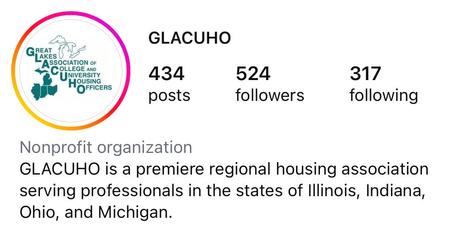
Social media has become one of the most powerful tools for storytelling and connection in higher education, but it still carries a bit of unknown and fear in the field of housing and residence life Professionals may worry about blurred boundaries, privacy issues, or risks to their reputation Yet, when approached with intentionality, social media can shift from a perceived hazard to a significant strength for students and staff This article explores how housing and residence life departments can use social media to increase involvement and engagement and how professionals can confidently manage it in their work. Social media is often one of the first spaces where we engage with incoming students. So, let’s turn that fear about these platforms into a sense of familiarity and fun!
SOCIAL MEDIA AS A COMMUNITY BUILDER
Residence life has always been about fostering connection, and today’s students are natives to the digital world; who expect regular online interactions Departments across the country are using social media to:
INCREASE INVOLVEMENT:
Instagram takeovers by RAs and student spotlights give incoming students a peek into day-to-day life in their halls Highlighting student leadership opportunities through social media can help students see themselves in these roles and increase the applicant pool Gone are the days of needing professional marketers; we see how students can capture campus experiences in authentic ways, and that can often go farther than you think.
BOOST ENGAGEMENT:
Creative use of memes and trends makes campus content approachable and engaging For example, a “caption this photo” challenge during move-in can create laughs and camaraderie while keeping students connected Go beyond pushing out advertising; instead, consider how you can celebrate and share stories of your students and staff
PROMOTE RESOURCES:
From counseling services to dining hall updates, social media serves as a one-stop shop for important information. Departments that use stories and reels for quick hits can reach more students and ensure they’re aware of necessary resources on campus. They’re on their phones anyway, so let’s meet the students where they’re at!
Students feeling included and celebrated online can lend to a strong in-person community as well. Our friends at Roompact offer great tips for positive engagement with students and staff online :https://wwwroompactcom/2021/12/3-res-life-quick-tips-for-engaging-residents-through-social-media/
DEMYSTIFYING THE FEAR
Many housing professionals shy away from social media because of the risks: what if students post inappropriate comments? What if staff overshare? What if one wrong post damages the department’s reputation? These are valid concerns, but they’re bound to happen, so let’s think about thoughtful strategies to address these fears:
CREATE CLEAR GUIDELINES:
Establish expectations for staff who are operating any accounts associated with the institution This ensures boundaries that instill professionalism while still encouraging creativity
SHARE RESPONSIBILITY:
A content calendar, paired with a team approach, prevents burnout and helps maintain consistency. Multiple perspectives also help ensure a variety of voices are represented in your timeline.
TRAIN STAFF AND STUDENTS
RAs, graduate staff, and student leaders benefit from coaching on digital professionalism and content creation Many institutions find that when students are trusted with responsibility while given some oversight, their creativity shines in positive ways.

Rather than fearing what could go wrong, residence life teams should focus on the powerful outcomes that can occur when social media is used in meaningful ways
SOCIAL MEDIA IN THE JOB SEARCH
For housing professionals themselves, social media isn’t just about connecting with students; it’s also about managing their online presence while job searching
PERSONAL BRANDING:
Depending on the institution, employers may take time to review public profiles. A thoughtful LinkedIn page or a professional online presence can demonstrate engagement within the field.
DIGITAL FOOTPRINT:
Being mindful that what you post, and even delete. It can shape how future employers perceive your judgment and professionalism within your work.
LEVERAGING POSITIVITY:
Social media can highlight leadership, showcase involvement, and provide evidence of skills in community building, marketing, and communication Following organizations like ACUHO-I, GLACUHO, NASPA, and ACPA can also connect professionals with valuable networks Be sure to follow GLACUHO on Instagram and Facebook!
The same tools that help students engage with their communities can help professionals engage within their field.



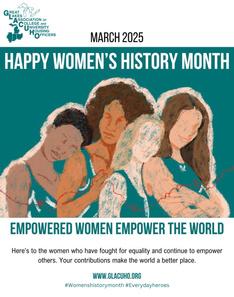
DO’S AND DON’TS FOR RESIDENCE LIFE SOCIAL MEDIA
To help guide departments and professionals, here’s a quick checklist:
DO:
Celebrate students and staff
Use interactive features like polls and stories
Promote events and resources
Keep content accessible with captions and alt text
Respond to engagement and questions
DON’T
Post without permission
Call out individuals publicly
Blur personal and professional accounts
Ignore institutional policies or FERPA
Overwhelm feeds with excessive content
Check out this great article from Modern Campus for further tips and hints on navigating social media in higher education. This article is suitable for novice or expert social media users, as well as everyone in between.https://sapro.moderncampus.com/blog/28-innovative-tips-for-your-student-affairs-officesocial-media-accounts
FUTURE TRENDS IN SOCIAL MEDIA AND RESIDENCE LIFE
As technology and student culture evolve, social media in residence life will continue to transform. A few trends to watch:
SHORT-FORM VIDEO DOMINANCE
Platforms like TikTok and Instagram Reels aren’t just passing fads. Students increasingly prefer quick, authentic videos over polished posts. Housing professionals who embrace short-form storytelling, like an RA highlighting a hall event in under 30 seconds, will see stronger engagement. These platforms have and will continue to revolutionize campus cultures
MICRO-COMMUNITIES AND NICHE PLATFORMS
Beyond Instagram and TikTok, students are forming smaller digital communities on platforms like Discord, GroupMe, Teams chats, and even private Reddit forums. Residence life staff may find opportunities to create micro-communities where students can connect more personally.
AI and Personalization
AI and Personalization
AI AND PERSONALIZATION

AI is already shaping content creation, from automated captions to AI-driven graphics. There is a lot AI can offer our field, from developing personalized messages or analyzing engagement data to improve programming. AI can also read information or resources to ensure there aren’t any gaps and we’re effectively equipping our students with what they need to succeed on campus.
AUTHENTICITY OVER PERFECTION
Students are gravitating toward raw, unfiltered content A behind-the-scenes video of an event set up or staff preparing for move-in might engage more students than a polished promotional graphic. This approach makes staff feel real and makes students feel more connected to the process.
By paying attention to these trends, residence life professionals can move beyond simply using social media and instead position themselves at the forefront of digital community building
LOOKING FORWARD
Social media is here to stay, and students are eager to see their campus communities reflected in digital spaces For housing and residence life professionals, the choice is clear: treat social media not as a tool for fear, but as a tool for growth By embracing creativity, setting clear boundaries, and approaching it with intentionality, professionals can use social media to strengthen community and even advance their own careers The future of residence life will continue to blend the physical and digital By becoming “social mediums” ourselves, we not only meet students where they are, but we also model the thoughtful, authentic engagement that makes our communities thrive
AI and Personalization
AI and Personalization

PROGRESSISNOTLINEAR:HOW TRADITIONALEDUCATION NEGATIVELYAFFECTS NEURODIVERGENTCOLLEGE STUDENTS

By:DimitriBoveroux
Heath, IndianaUniversityBloomington
Introduction
With the increasing visibility social media provides, now more than ever we are seeing students talk openly about their neurodivergency and how it impacts their college experience. Students are utilizing their accessibility offices more, asking for resources, and coming to us as Housing professionals asking for accommodations based on their experience being neurodivergent. I was one of these students, too. College is already hard enough for first-year students, but the added layer of being neurodivergent can act as a barrier between them and thetraditionalfour-yearfinishlineofgraduation.
When I think back on my undergraduate experience, I knew that my neurodivergency would affect my college career, but not to the degree that it did. Having accommodations was very helpful, thanks to my wonderful advisor and counselor in the Disability Services office, but the rigid nature of the courses I was enrolled in made it difficult to stay on top of my school work, and frequentlycostmemymentalandphysicalhealth.
AcademicBarriers
Oftentimes, neurodivergent students struggle with traditional education, in that the structure can be constricting to students who may have different learning styles and disabilities, or whose needs do not fit the typical framework of a lecture-style classroom. Or, on the other end, programs with too much flexibility and freedom can be a detriment to neurodivergent students due to the lack of routine and organization. All of these factors, alongside the weight of knowing how much their tuition costs and where the money is coming from, can put an immense amount of pressure on neurodivergent students. Additionally, there is a disparity of graduation rates between students with disabilities and students without. For example, the six-year graduationrateofstudentswithdisabilitiesis49.5%comparedto 68% for students without disabilities or who do not identify as neurodivergent. Additional research shows that only 41% of students with disabilities enrolled in a four-year college program willgraduatewithabachelor’sdegree(CollegeLivingExperience, 2025).
IusedtoholdalotofshamethatIwasoneofthosestudentswho almost did not finish my undergraduate degree due to my neurodivergency. It was extremely difficult for me to find the motivation for core classes when they did not directly relate to my degree or interests. For a long time it was hard for me to talk aboutmysituationbecauseIfeltlikeitwasmyfault,orthatIwas a failure for not graduating in the “traditional” sense. As a fulltime professional,I have had the opportunity to talk to students who have similar experiences and concerns, some of whom had never heard of the resources we have on campus for accommodationsbasedonneurodivergencyanddisability.
SocialBarriers
Other obstacles neurodivergent students often face are social and communication barriers. A frequent statement from upperclassmen or alumni is that your first year is when you make connections and start developing relationships. For neurodivergent students, this can be a challenge. Being neurodivergent does not mean that socializing is an impossible feat. Rather, understanding the nuances of social situations and cues can be difficult for people who are neurodivergent. Some social barriers these students face can include misunderstanding social cues, experiencing sensory overload in larger social settings, feeling like they do not have anything in common with other students, and more. All of these factors can lead to social isolation which can make staying at college feel impossible. Feeling so out of place can also deter neurodivergent students from finding resources for fear of being judged, even by those whose job it is to help neurodivergent and students with disabilities. Roughly two-thirds of college students with disabilities choose not to disclose their disability due to the fear offurtherstigmatization(AdamandWarner-Griffin,2022).
So, what are some ways we can assist neurodivergent students as Housing professionals? Although some of us are not psychology experts, there are many ways we can help neurodivergent students and students with disabilities as a whole:
HowWeCanHelp
1.Stop and listen: The needs of neurodivergent students are not one-size-fit-all. Some students may just need a listening ear rather than an outcome. Some may need more advice and a solution to a problem. Neurodivergency is not a monolith, but ratheraspectrum.
2.Share your knowledge: As discussed earlier, many students with disabilities do not know the resources available to them. Share the contact information for your campus’s Accessibility/Disability Services and on-campus mental health resources if the student could benefit from them. Learn more about on-campus opportunities and organizations that mayfitthestudent’sinterestsandneeds.
3.Stay inclusive: Physical accessibility is extremely important, such as encouraging your staff to include sensory-friendly programming, smaller group programming, and individual outreach if a student is self-isolating. That said, do not forget about other forms of accessibility. Is your website accessible, easy to read, and easy to understand? Are your resources for accommodations and mental health services hidden behind multiplewebpages?
4.Advocate: Neurodivergent students often feel like they are not “disabled enough” to be considered for an accommodation. If a student is expressing a need for an accommodation, advocate for them, whether that is through a departmental process or reaching outtoanadjacentdepartment.
Conclusion
Neurodivergent students have always been part of our campus communities and, thankfully, their visibility is growing. Because neurodivergency can be “invisible”, it is crucial to stay attentive and compassionate and offer a gentle nudge towards resources and accommodations when needed. As Housing professionals, we are often the first full-time staff students encounter. That makes our role especially important in fostering inclusive, accessible spaces. Progress isn’t always linear, and that’s okay. What matters most is that every studentfeelsseen,supported,andempoweredtosucceed.
Beyond the Billboard: The Art of a Personal Invitation
DBerger, J. (2014). Word of mouth and interpersonal communication: A review and directions for future research. Journal of Consumer Psychology, 24(4), 586-607. https://doi.org/10.1016/j.jcps.2014.05.002
Cerutti, J., Burt, K. B., Moeller, R. W., & Seehuus, M. (2024). Declines in social–emotional skills in college students during the COVID19 pandemic. Frontiers in Psychology, 15, Article 1392058. https://doi.org/10.3389/fpsyg.2024.1392058
Spring Into New Habits
Clear, J. (2018). Atomic habits: tiny changes, remarkable results: an easy & proven way to build good habits & break bad ones. New York, New York, Avery, an imprint of Penguin Random House.
Fogg, B J. Tiny habits: the small changes that change everything. Boston: Houghton Mifflin Harcourt, 2019.
Training Professional Staff with no Crisis Management
Sanford, N. (1967). Where colleges fail: The study of the student as a person. San Francisco: Jossey-Bass.
Miller, T. K. & Prince, J. S. (1976). The future of student affairs: A guide to student development for tomorrow’s higher education. San Francisco: Jossey-Bass.
Rogers, R. F. (1990). Student Development. In U. Delworth, G. R. Hanson, & Associates, Student Services: A Handbook for the profession (2nd ed., pp. 117-164). San Francisco: Jossey-Bass.
The Power of Design
Elliot, A. J., & Maier, M. A. (2014). Color psychology: Effects of perceiving color on psychological functioning in humans. SAGE Open, 4(1). https://doi.org/10.1177/2158244014525423
IOSR Journals. (2023). The cultural significance of color: A cross-cultural study. IOSR Journal of Humanities and Social Science (IOSR-JHSS), 28(6), 51–55. https://www.iosrjournals.org/iosr-jhss/papers/Vol.28-Issue6/Ser-3/F2806035155.pdf
Inkbot Design. (n.d.). Logo design psychology: How logos impact perception. Retrieved from https://inkbotdesign.com/logo-designpsychology/
International Journal of Advanced Research and Publications. (2023). Inclusive residential programming and student belonging. IJARPR, 2(7). https://ijarpr.com/uploads/V2ISSUE7/IJARPR0727.pdf
Organization and Structure to support Neurodiversityhttps://edu.web.ox.ac.uk/sites/default/files/edu/documents/media/neuroinclusive_communications_guide.pdf
Screen readers-
https://m2.material.io/design/usability/accessibility.html#assistive-technology Fontshttps://webaim.org/techniques/fonts/


A Housing Professional’s Guide to Learning and Teaching about Campus Freedom of Speech and Expression
American Association of University Professors. (2015). 1940 statement of principles on academic freedom and tenure. https://www.aaup.org/report/1940-statement-principlesacademic-freedom-and-tenure
Chemerinsky, E., & Gillman, H. (2017). Free speech on campus. Yale University Press. Friedman, J. (2019). FREE SPEECH GUIDE FOR STUDENT AFFAIRS. National Center for Free Speech and Civic Engagement. https://freespeechcenter.universityofcalifornia.edu/wp-content/uploads/2023/12/Jonathan-Friedman-_-2019-2020-FellowshipResearch_-Free-Speech-Guide-for-Student-Affairs.pdf
Lake, P. (2009). Beyond discipline: Managing the modern higher education environment. Hierophant Enterprises.
PEN America Principles | PEN America. (n.d.). Campus Free Speech Guide. Retrieved July 26, 2025, from https://campusfreespeechguide.pen.org/pen-principles/#hateful-speech
Post, R. (2012). Democracy, expertise, and academic freedom: A First Amendment jurisprudence for the modern state. Yale University Press.
Strayhorn, T. L. (2018). College students' sense of belonging: A key to educational success for all students (2nd ed.). Routledge.
U.S. Const. amend. I.



